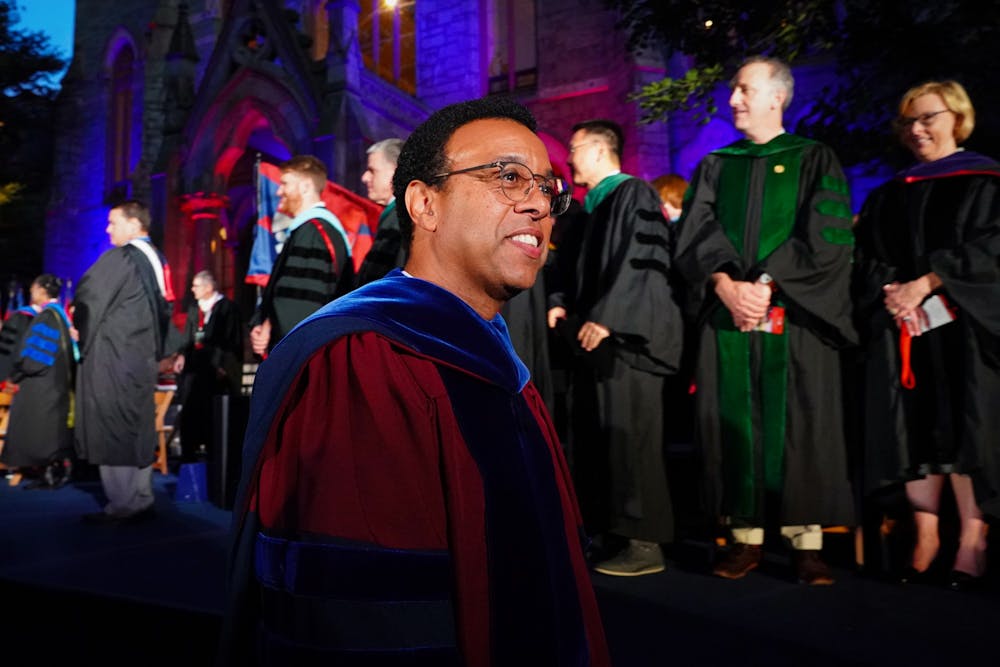At the beginning of this year, it was announced by the University of Pennsylvania Board of Trustees that Penn had found its new President, Liz Magill, who currently serves in the position of provost of the University of Virginia. Though current Interim Provost Beth Winkelstein is expected to hold her position during this transitional period, it is also likely that the University will shortly be in search of an individual to serve as provost in a more permanent fashion. This new recruitment provides Penn with a chance to make good on its promises to make Penn a more diverse and inclusive space for students and faculty.
In a conversation with the Office of Student Affairs, I asked, both as a student government leader as well as a general Penn student, what this presidential transition would mean for students and the Penn community as a whole. It was then I learned that we would not just be facing one transition, but in fact two, with the hiring of a new provost set to occur in the near future. While the idea of two of the most senior leadership roles at Penn being transitioned was an initially daunting prospect, I was also struck by the rarity of the occasion, and the opportunity it presented for Penn to reform and revitalize its priorities and commitments to diversity, equity, and inclusion.
While under former President Gutmann’s tenure, the University did make significant strides toward diversity and equity, such as the creation of the Office of Social Equity and Community and hiring of Penn’s first chief diversity officer, the appointment of a person of color as provost would allow us as a university to move one step closer to meeting these standards we have set for ourselves, especially in the face of a presidential transition which some have criticized as not being reflective enough in terms of diversity.
Choosing a person of color goes beyond just appearances, though. Our lived experiences are a product of our unique cultures, surroundings, and communities with which we identify, and these qualities in turn inform how we act, serve, and lead. As the Undergraduate Assembly’s equity and inclusion director, I constantly find myself and my committee members working with the leaders of our Cultural Resource Centers and other administrative offices focused on misrepresented and underrepresented identities, often also as individuals who identify with these groups as well. They have been some of our most ardent supporters in initiatives and projects which seek to improve the experience of Penn students of diverse backgrounds, as they understand the unique sets of challenges facing these types of students at an institution like Penn.
When I think of University leadership and the impact representation can have on students, I often find myself thinking of current Vice Provost for University Life Mamta Accapadi, though most of us students simply know her as Mamta. The news of Accapadi's appointment came only a few months after I had made the decision to attend Penn, and it allowed me to feel more secure in my decision. Knowing that there would be an administrator at my school who not only looked like me but was a child of immigrants like myself and also had a track record of championing diversity and multicultural education initiatives was an important part of my transition to university life. In conversations with Accapadi, her sincere passion for the diverse student body really comes through and is followed by action which is informed and aware, a direct result of who she is as an individual.
The importance of hiring diverse University leadership goes just beyond Penn, however. According to a 2019 American Council on Education study, of the 70% of male college presidents, only 12% were men of color. For the 30% of female college presidents, the figure for women of color was even lower: 5%. These numbers become far more illuminating in the context of the changing student population of American colleges and universities, which has jumped from 30% nonwhite to 45% in just the last two decades.
Having a diverse and representative group of administrators responsible for making significant decisions ensures that the needs of underrepresented students remain a priority and are embedded in a curriculum that is inclusive and multicultural. If Penn is sincere in its mission to improve diversity, equity, and inclusion on our campus, the selection of a new provost provides the University the fortuitous opening to do just that and make a lasting impact in the years to come.
ALEX EAPEN is a second year in the College from Elkridge, Md. His email is aeapen@sas.upenn.edu.
SEE MORE FROM ALEX EAPEN:
Consistency and compassion: Why Gutmann is no common university president









